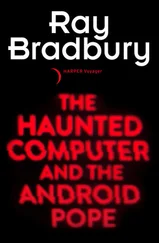But in the meantime, in 1977, the Warner version of Atari was putting itself in a position to mine an even larger video game bonanza by building cheap game machines that could be plugged into home television sets; these devices, also “dedicated” rather than programmable, enabled people to play the enormously popular arcade games like Pong and Tank, and eventually Space Invaders, in their homes. The first versions of these devices sold extraordinarily well, but they were soon abandoned by their owners because they were limited in their capabilities and offered only one or two games.
Then, in the same year, Atari introduced the VCS 2600, which offered replaceable cartridges called ROMs. By plugging in a new ROM cartridge, it became possible to play the latest game on the old machine, instead of discarding the entire machine for the latest model. This is known in the industry as “giving away the razors and selling the blades," except in Atari’s case it was selling both the razors and the blades. Although they were pieces of hardware, the ROMs were actually a form of software; inside each cartridge was the program that enabled the machine to play a new game. Their eventual success with consumers marked the beginning of a broadly based home video game industry and the point when software became a significant consumer commodity.
The home video game industry soon rivaled even the intensely profitable arcade game industry; Atari’s revenues rose to more than a billion dollars per year. It was the most phenomenal rate of growth of any new industry in history, and an experience far beyond any CEO’s wildest dreams. And Atari’s CEO at the time was Raymond Kassar, who had recently been hired by the notoriously charismatic Warner chairman, Steve Ross. Sophisticated, sybaritic, highly cultured, Kassar had spent his entire career at Burlington Mills, a textile company, before coming to Atari. He wasn’t a Silicon Valley entrepreneur and didn’t care much for engineers or programmers, but for a while he happened to be in exactly the right place at exactly the right time.
After the Japanese introduced Space Invaders, they brought out Galaxians, which had even more variations on the “shoot the invaders” theme, and then Pac-Man, which created the “munch-’em-up” genre. Incredibly, people spent more than a billion dollars’ worth of quarters a year simply play this one arcade game. Then Atari licensed from the Japanese the rights to create the VCS (home) version of Pac-Man. and a programmer was hired to do a quick-and-dirty version for a reported $1 million. Ironically, the game programmer who created the original Japanese version of Pac-Man didn’t make a penny in royalties.
By 1982, Atari had more than 80 percent of the huge and still growing home game hardware and software market. The VCS might not have been a computer, but those cartridges certainly were software, and a programmer was needed to create the code that was embodied in the cartridges. That meant that there were juicy royalties to be made. More than that, some programmers began to feel that they ought to get some personal recognition for their accomplishments.
While Kassar was buying apartments in the most expensive co-ops in the world and flying around in a luxury jet, a few of the programmers who were creating Atari’s wealth decided that it was time for them to get their names printed on the cartridge’s package. Kassar tried to ignore them, but they were persistent. In May 1979, four of Atari’s best game designers, dressed in jeans, finally met with the elegantly tailored Kassar in his office. In an interview in an issue of InfoWorld (Vol. 5, No. 48), one of the programmers, Larry Kaplan, summed up the CEO’s reaction: “He called us towel designers. He said, ‘I’ve dealt with your kind before. You’re a dime a dozen. You’re not unique. Anybody can do a cartridge.’”
The following October, three of the four game designers— Dave Crane, Al Miller, and Bob Whitehead — left Atari to form Activision. Kaplan joined them a short time later. According to Kaplan, “Activision was started to prove that Kassar was wrong.” But as an awesome collection of talent and a burning desire to succeed are still not sufficient to build a world-class company, the programmers soon got together with Jim Levy, a CEO whose previous experience had included involvement with a music and software company as well as with Time, Inc., and Hershey Foods. Eventually a venture capital partner—Sutter Hill, one of the hottest in Silicon Valley—joined Activision’s effort.
As the first company in the video game business to concentrate exclusively on software, Activision was breaching the wall between the still financially puny but ever more sophisticated home computer software market and the relatively one-dimensional but monstrously profitable video game software market.
According to Levy, Activision’s original business plan was based on three fundamental ideas. The first could be called the “appliance hypothesis”—a prediction that during the 1980s the computer would become as important in American homes as the television, radio, stereo, and automobile. “The second fundamental idea,” Levy said in a June 1984 interview in Atari’s Antic magazine, “was that software was going to drive the market.” And the third idea was based on the premise that a software company requires an approach and focus different from that which a hardware company requires. This corporation, after all, was going to prove that programmers weren’t towel designers.
Activision was an instant hit, and when the company went public, it made the founders Silicon Valley millionaires. By 1982, after only two years in the business, they topped $150 million in sales. Activision’s best-selling product, a game called Pitfall, sold more than three and a half million units worldwide. In subsequent years, the company marketed four more games that sold more than a million units each. The Activision founders far surpassed their original goal of proving something to Atari: In effect, they created the concept of the software star. The company not only put the programmers' names on the game packages, it also put their pictures and bios in promotional materials and sent the programmers themselves on speaking tours.
Activision wasn’t Kassar’s—and Atari’s—only problem. In 1981, when another group of game designers left Atari to form Imagic, Kassar called them “high-strung prima donnas,” and afterwards many of the programmers who remained at Atari soon sported T-shirts with the words: “I’m another high-strung prima donna from Atari.” But with annual sales figures approaching the billion-dollar mark, Atari was in no mood to listen to doomsayers who decried the erosion of their programming talent.
Atari’s VCS was soon followed by other systems, including Odyssey, Intellivision, and Colecovision. Other game companies proliferated, and some of the country’s largest companies became involved—notably Quaker Oats, CBS, and Mattel. By the time the video game business reached its peak, in the early 1980s, another up-and-coming industry was making inroads—the home computer market. Both the hardware and software components of personal computers had grown more powerful and less expensive since the days of the Altair. When microcomputers first became powerful enough to accommodate sophisticated game programs, complete with graphics, Brøderbund and I entered the story.
I learned to program at the age of seventeen, which is a lot older than many of the current crop of programming stars were when they started. In fact, when I got my start in 1964, many of today’s software luminaries were still in diapers. And now, a lot of the people in the software industry who are my age or older are taking orders from CEOs who are much younger than they are. Two prominent examples—Steve Jobs, co-founder of Apple Computer, and Bill Gates, co-founder of Microsoft, the largest microcomputer software company— were both under thirty years old in 1984, when I began writing this book.
Читать дальше










